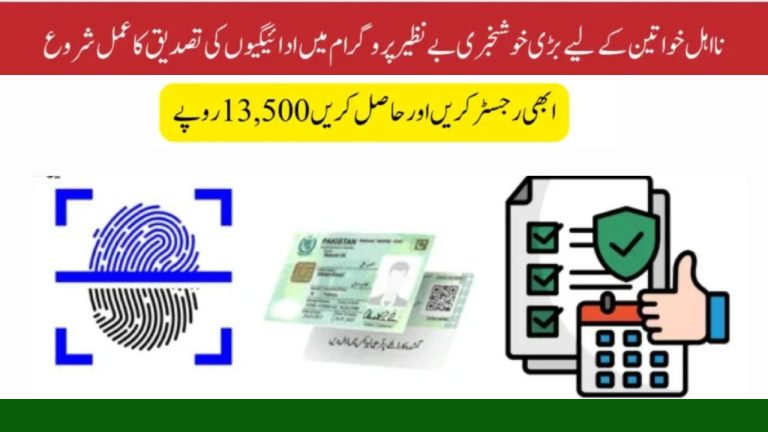
Introduction:
BISP 8171 NADRA Biometric Payment is a crucial process that ensures the safe and accurate distribution of financial aid to deserving beneficiaries under the Benazir Income Support Programme (BISP). By linking CNIC cards with biometric verification through NADRA, this system safeguards against fraud and guarantees that payments reach the right people. This article explains the entire BISP 8171 NADRA Biometric Payment procedure in simple terms, helping beneficiaries understand how to receive their payments without hassle.
What is BISP 8171 NADRA Biometric Payment?
The BISP 8171 NADRA Biometric Payment is a security measure implemented to verify the identity of beneficiaries using their fingerprint scans linked to their CNIC identity through the National Database and Registration Authority (NADRA). This biometric verification prevents misuse by ensuring only eligible people receive quarterly financial assistance from BISP.
Why Biometric Verification is Important
Biometric verification helps eliminate fake or duplicate registrations, which in the past caused funds to be misallocated. By confirming the beneficiary’s identity at NADRA centers, BISP can securely disburse the quarterly payment of Rs. 13,500 to the rightful recipients. Without this verification, individuals may face payment delays or suspensions.
Step-by-Step Guide to Complete Biometric Verification
- Visit your nearest NADRA office with your original CNIC.
- Register your fingerprint biometrics to link your CNIC in the BISP system.
- Confirm your registration and status either through SMS by sending your CNIC to 8171 or by visiting the official BISP website.
- Once verified, receive SMS notifications about payment dates and locations.
- Collect your cash payment securely from designated BISP payment centers or partner outlets.
How to Check Your Payment Status Using 8171
You can easily check your payment status by sending your CNIC number via SMS to 8171. The system will reply with your eligibility and payment details, helping you stay informed about your entitlements and any required actions.
Resolving Biometric Verification Issues
If your fingerprint does not match during payment or verification, you can revisit the NADRA office for manual verification or biometric re-verification. It is essential to keep your contact information updated with BISP to receive timely alerts.
Advantages of the BISP 8171 NADRA Biometric Payment System
- Ensures secure and fraud-free payments
- Simplifies the payment process with SMS notifications
- Reduces crowding at payment centers by organizing cluster-based payment schedules
- Empowers beneficiaries by providing financial aid without delays
Frequently Asked Questions (FAQs)
Q1: What should I do if I receive an SMS from 8171 asking for biometric verification?
A: Visit your nearest NADRA center with your CNIC to complete the biometric verification process to avoid suspension of your BISP payments.
Q2: Can I check my BISP payment status using the 8171 SMS service?
A: Yes, simply send your CNIC number to 8171, and you will receive information about your payment eligibility and schedule.
Q3: What happens if my fingerprint does not match during verification?
A: You can revisit a NADRA center for manual verification or biometric update to ensure your payment is not affected.
Q4: How often are BISP payments made after biometric verification?
A: Payments are made quarterly, typically every three months, with amounts currently set at Rs. 13,500.
Q5: Where can I collect my BISP payment after verification?
A: Payments can be collected from BISP partner outlets, including HBL Konnect and designated cluster payment centers notified via SMS.
Conclusion
The BISP 8171 NADRA Biometric Payment system plays a vital role in ensuring that financial support from BISP reaches the right beneficiaries in a secure and timely manner. By completing your biometric verification promptly and staying updated through the 8171 SMS service, you can avoid delays and enjoy uninterrupted benefits. This system exemplifies the government’s commitment to transparency and proper distribution of welfare funds.

